How Many Mountains Are There on Earth Today: Top 10 Highest and Smallest
 |
| How Many Mountains Are There on Earth Today: Top 10 Highest, Smallest |
| Table of Content |
About 20% of the Earth’s land is covered with mountains, including well-known ranges such as the Himalayas in Asia, the Rocky Mountains in North America, the Eurasian Alps, and the Andes in South America. The most mountainous states in the U.S. are Colorado, Wyoming, and Utah.
Many mountainous countries rank among the most beautiful countries in the world, and mountains also enable a vast range of unique outdoor activities, including skiing, snowboarding, hiking, mountaineering, trekking, rock climbing, mountain biking, base jumping, hang gliding, and more.
What is a mountain?
There is no exact distinction between a mountain and a hill. Mountains are usually steeper and higher. Also, a mountain has autonomy, so a large hill on a mountain plateau does not become a mountain itself. For the demarcation of two connected geoformations, the topographic prominence (shoulder drop) and dominance (distance between each other) are also used. Here again, there are no uniform absolute values. In the European Alps, for example, a prominence of 30 meters is considered to be the standard for the autonomy of a mountain. In the Himalayas, up to 500 meters is used as a criterion. For the more than 1500 mountains worldwide with a prominence of over 1500 meters (4921 ft), the term "Ultra Prominent Peak" has become established.
Three types of mountains
Fold mountains, Block mountains and Volcanic mountains.
• Fold Mountains: Fold mountians are formed due to the collision of two textonic plates. The Himalayan Mountains and the Alps are examples of young fold mountains.
• Block Mountains: They are created when large areas are broken and displaced vertically. Rhine valley and the Vosges mountains are examples of block mountains.
• Volcanic Mountains: They are formed due to volcanic activity. Mt Kilimanjaro in Africa and Mt Fujiyama in Japan are examples of such mountains.
Impact of Mountains on Habitats and Geopolitics
Mountains often serve as geographic features that define the natural borders of countries. Their height can influence weather patterns, stalling storms that roll off the oceans and squeezing water from the clouds.
The other side is often much drier. The rugged landscapes even provide refuge—and protection—for fleeing and invading armies.
How many mountains are there on Earth?
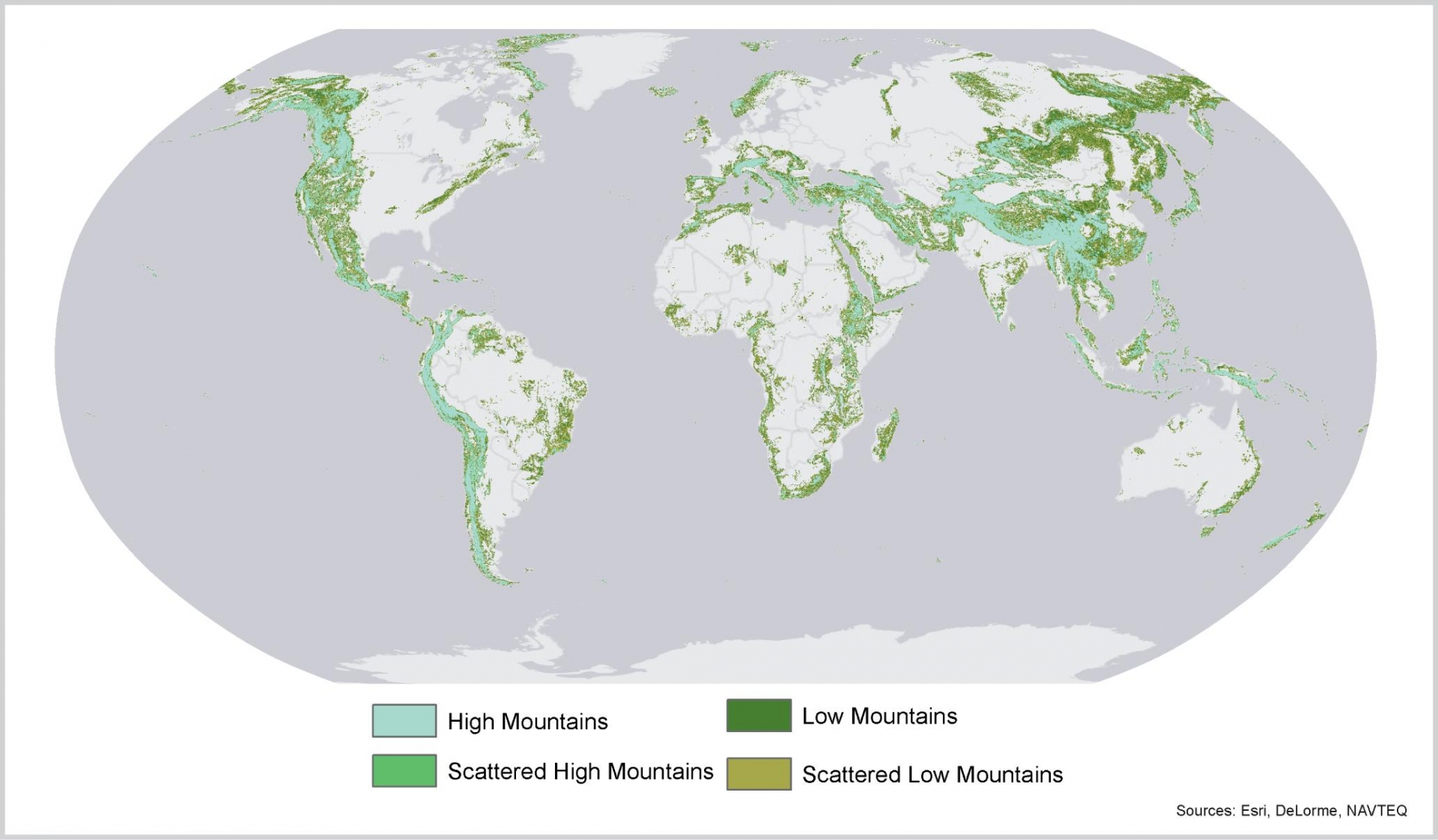 |
| Photo: bioone |
There are 1,187,049 mountains in the world!
This is the latest number straight from the PeakVisor lab which counts all the mountains which have names and enjoy over 1-meter prominence.
Here are some numbers for particular countries:
• The United States - 77,706 named mountains
• Italy - 42,541 named mountains
• Switzerland - 10,811 named mountains
It is impossible to give an exact figure regarding the number of mountains in the world. There are hundreds of mountains on land and under the sea. There are very few mountain ranges that are very tall and that have a permanent snow cover. The Alps in Europe, the Himalayas in Asia, the Andes in South America, and the Rockies and Appalachian mountains in North America are well-known mountain ranges.
There are other lesser-known mountain ranges, such as the Pyrenees on the borders of France and Spain, the Atlas Mountains in Morocco, the Urals in Central Asia, the Sierra Nevada in Western United States, the Karakorum in India and Pakistan, the Hindu Kush Mountains in India and the Cascades on the border between Canada and the USA.
Australia has the famous Blue Mountains in New South Wales. New Zealand has the great Southern Alps. Mt. McKinley, the highest point in North America, is in the great Alaskan Range. Mt. Blanc, located in the French Alps, is the highest point in Europe. Mt. Everest is the highest peak in the world, with a height of 8848 meters.
There are undersea mountain ridges as well. The Mid-Atlantic Ridge runs along the length of the Atlantic Ocean from north to south and is more than 40,000 kilometers long.
Which country has the most mountains?
By nearly any measure, Bhutan is the world's most mountainous country. Bhutan’s average elevation is 10,760 feet and mountains cover 98.8% of its total area. The Northern parts of Bhutan are dominated by the Greater Himalayas, with the highest point being Gangkhar Puensum at 24,840 feet above sea level. Gangkhar Puensum is the highest unclimbed mountain in the world. Most of the Bhutanese population lives in the southern parts of the country, consisting of valleys, hills, and highlands.
The highest mountains on each continent
The sporting challenge is to climb the highest mountains on each continent. However, there is a problem in defining the limits. The following list goes back to the US-American Dick Bass. Also known, however, is a slightly different list of the Seven Summits by the Italian Reinhold Messner, who considers Mont Blanc (4810 m) to be the highest European mountain and Puncak Jaya in Indonesia (4884 m) to be the highest Australian mountain.| Continent | Peak | Height | Mountain range | Countries |
|---|---|---|---|---|
| Africa | Kibo | 5,895 m | Kilimanjaro | Tanzania |
| Asia | Mount Everest | 8,848 m | Himalayas | Nepal, China |
| Antarctica | Mount Vinson | 4,892 m | Sentinel Range | - |
| Australia | Mount Kosciuszko | 2,228 m | Great Dividing Range | Australia |
| Europe | Elbrus | 5,642 m | Caucasus Mountains | Russia |
| North America | Denali | 6,190 m | Alaska Range | USA (Alaska) |
| South America | Aconcagua | 6,962 m | Andes | Argentina |
Top 10 Highest Mountains in the World
1. Mount Everest (China and Nepal)
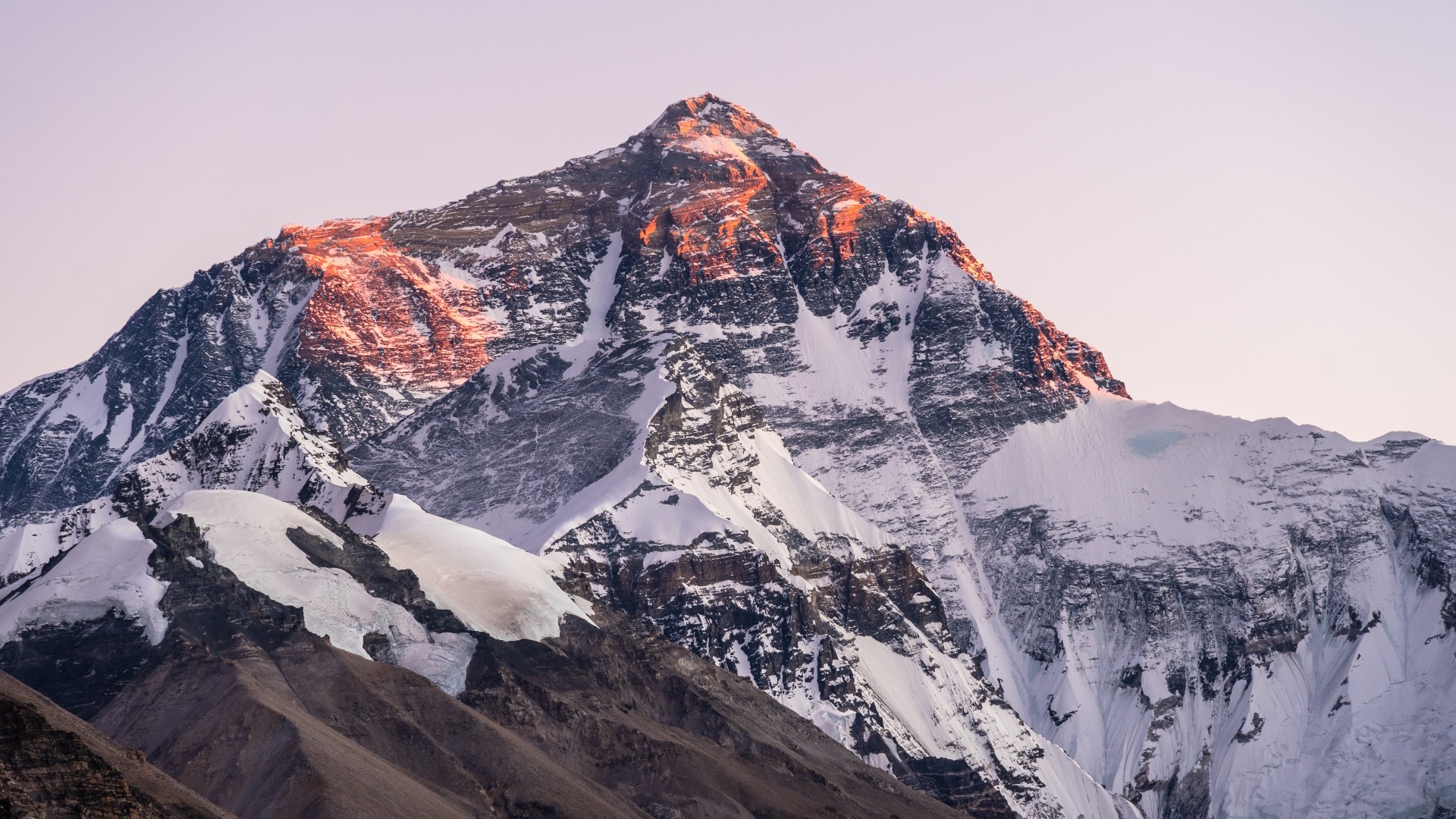 |
| Photo: livescience |
The world’s tallest mountain also goes by the Tibetan name “Chomolungma” and the Nepalese name “Sagarmatha." It sits on the border between Nepal and Tibet, an autonomous region of China. The Nepalese and Chinese governments issue anywhere from 300 to 800 permits to climb the giant each year.
The two nations have debated the summit’s height throughout history, as China's previous official measurement had put the mountain over 13 feet lower than Nepal's. In 2020, however, data from surveys performed in both countries put the new height of the 50-60 million-year-old mountain at 29,031.69 feet, though scientists believe that it is still growing by half a meter per century. The summit only has room for about six people at a time, and concerns about overcrowding on the mountain only increased when microplastics were found near the top in 2020.
2. K2 (Pakistan and China)
The second highest mountain in the world is K2. The mountain took its name from the notation used by the Great Trigonometrical Survey of British India. At the time, there wasn’t an apparent local name for the mountain, and so it stuck. K2 is also nicknamed the ‘Savage Mountain’, which is cool in a slightly Point Break, over-the-top extreme kind of way. It is fitting, though, too.
The mountain is typically considered one of the toughest mountains in the world to climb, notoriously harder than Mount Everest, despite being the second tallest mountain in the world. K2 actually has the second-highest fatality rate per summit attempt of all mountains over 8000m, with around 300 successful summits and 77 deaths. The highest fatality rate is that of the tenth highest mountain in the world (spoiler alert), Annapurna I in Nepal. Unlike Annapurna though, K2 had never been summited in winter - until it happened this winter.
3. Kanchenjunga (India)
The highest peak in India and the third tallest mountain in the world at 28,169 feet, Kanchenjunga welcomes a maximum of 20-25 climbers each year—though 2019 saw a record with 34.
This section of the Himalayas also blends into eastern Nepal, and the region hosts about 2,000 species of flowering plants, 252 species of birds, and a few of the country’s most endangered mammals, such as the snow leopard and the red panda. Nepal protects Kanchenjunga through the Kanchenjunga Conservation Area Project, providing sustainable community development for the district’s population of 122,072, wildlife monitoring, and natural resource management.
4. Lhotse (Nepal and China)
 |
| Photo: gody |
Lhotse is one of the more famous mountains on any list of the top 10 highest mountains in the world, largely because of its proximity to Mount Everest. The route up Lhotse is the same as that up Mount Everest from Everest Base Camp until you pass Camp 3 and then depart to the Reiss couloir from the Lhotse Face, from where the peak of Lhotse is reached.
5. Makalu (Nepal and Tibet)
A bit farther southeast of Mount Everest, the pyramid-shaped mountain of Makalu rises 27,838 feet on the Himalayan Nepalese-Tibetan border. Its remote, four-sided peak makes Makalu one of the world’s most difficult mountains to climb, due to its sharp edges and isolated position exposed to the elements. As a result, only five of the first 16 climbing attempts proved successful, and even now, only 206 have made successful ascents.
6. Cho Oyu (China and Nepal)
Standing at 26,906 feet in the Himalayas, Cho Oyu is widely considered one of the most achievable of the world’s fourteen 8,000-meter peaks (26,247 feet), thanks to its northwestern face and gentle slope. It has a 63.4% success rate with nearly 4,000 climbers and guides having reached the summit to date, the highest number of all the eight-thousanders, with the exception of Mt. Everest.10 Climbers tend to use this mountain as a stepping stone to train for Everest or to see how their body reacts to the high altitude. That’s not to say scaling this massive mountain isn’t dangerous, however; Cho Oyu has still claimed the lives of at least 52 people since 1952.
7. Dhaulagiri (Nepal)
The Dhaulagiri in Nepal is the seventh highest mountain in the world at 8167m, and one of the most aesthetically stunning mountains of the lot. The Dhaulagiri was first climbed on 13 May 1960 but is perhaps best known for its visibility on the popular Annapurna Circuit, with Annapurna I just 34km away and the Dhaulagiri a regular feature on the skyline while trekking Annapurna.
The mountains are separated by the world’s deepest gorge – the Kaligandaki Gorge – so it’s not a part of the world that’s particularly struggling for scenery.
8. Manaslu (Nepal)
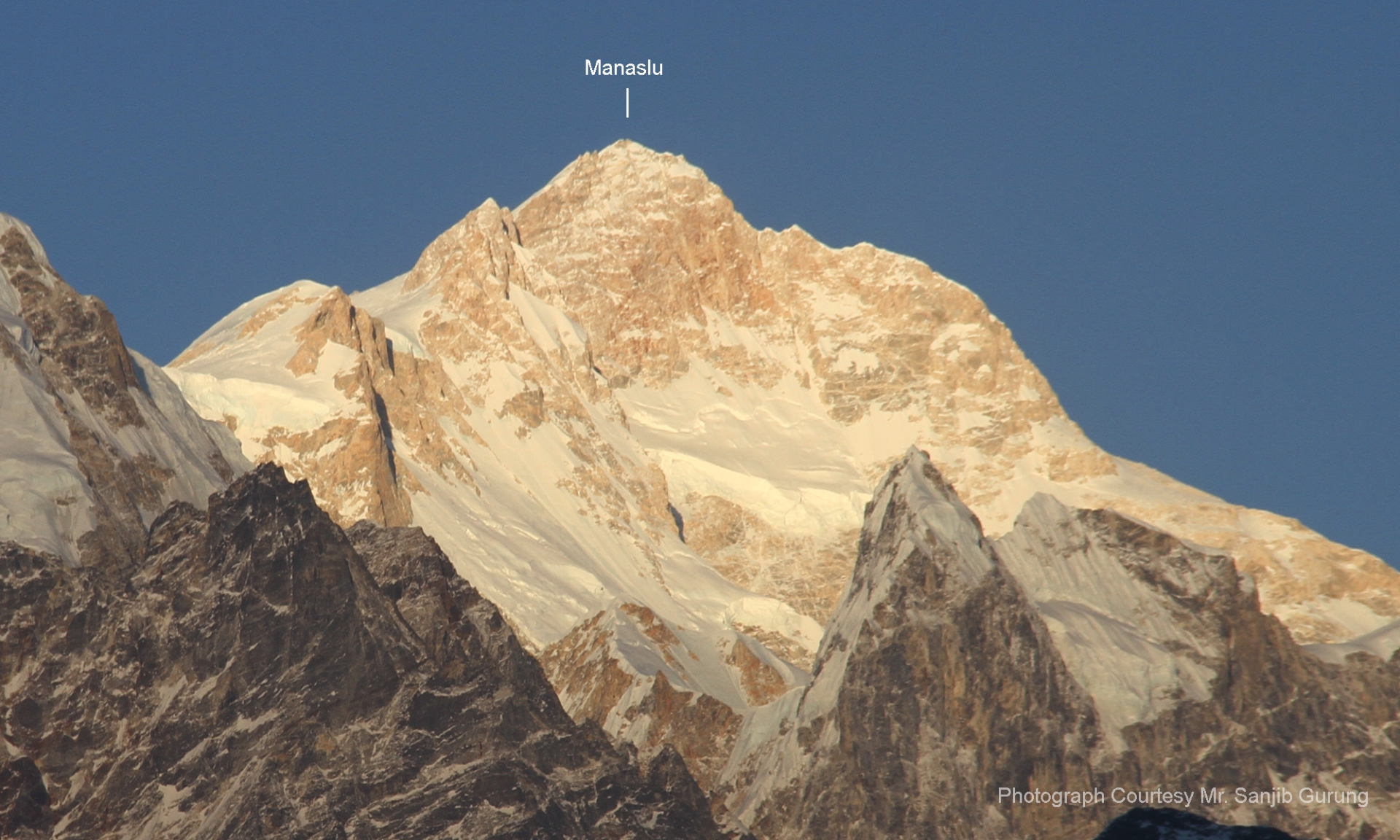 |
| Photo: nepalhimalpeakprofile |
Manaslu is known for being one of the more dangerous of the eight-thousanders due to its high number of avalanches. Just over 52% of expeditions are successful and there’s a death rate of 1 in 10 among climbers.12
In 1974, an all-female team from Japan became the first women to successfully summit an 8,000-meter peak when they reached the top of Manaslu, which measures 26,781 feet.12 The 642-square-mile Manaslu Conservation Area was declared in 1998 to protect the habitats of the 33 mammal species, 110 bird species, 11 butterfly species, and three reptile species that live in the Manaslu region in the North Nepalese Himalayas.
9. Nanga Parbat (Pakistan)
Nanga Parbat earned its reputation as the “Killer Mountain” after a total of 26 people died attempting to reach the summit before its first ascent in 1953 (a feat completed by Austrian climber Hermann Buhl, who performed the climb without the use of supplementary oxygen).
Today, the 26,660-foot mountain in Pakistan has seen at least 339 successful summits and 69 deaths, giving it a death rate more than six times that of Everest.13 Nanga Parbat attracts geologists as well since it’s rising at a rate of 7 millimeters (0.275 inches) per year, making it the fastest rising mountain on Earth.14 Scientists believe this is due to erosion, which reduces the weight of the mountain range and accelerates the tectonic process below the mountain.
10. Annapurna (Nepal)
Annapurna in Nepal is the tenth highest mountain in the world, and one of the most famous mountains on this list courtesy of the fact that trekking in Annapurna is truly world-renowned. Annapurna may be only the tenth highest mountain in the world, but it actually has a higher fatality rate than any other mountain on this list, with 32% of attempts to reach the top of the mountain resulting in a fatality.
Far more popular than the summit attempt is the Annapurna Circuit Trek, which circumnavigates Annapurna and takes in views from the Dhaulagiri to the mountain passes of the Annapurna Massif. Treks to the Annapurna Sanctuary, the Base Camp for climbing the peaks of Annapurna, are also increasingly popular.
The 5 Smallest Mountains in the World
1. Mount Wycheproof, Australia
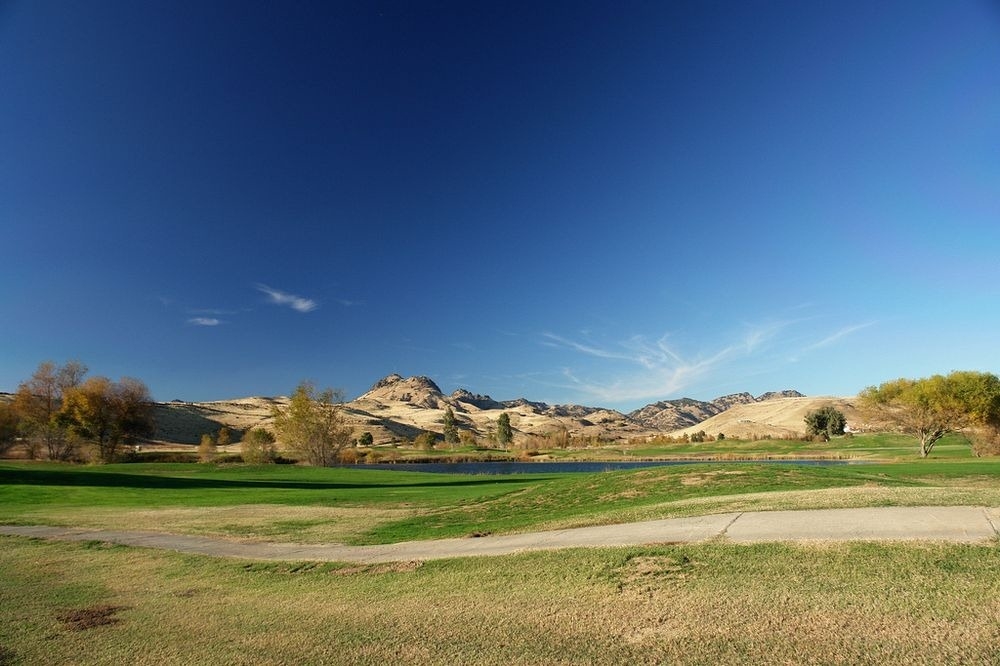 |
| Photo: amusingplanet |
The smallest mountain in the world is the little-known Mount Wycheproof at 141 feet above the surrounding terrain. However, the mountain stands 486 feet above sea level. The mountain is located in Terrick Terrick Range in Australia. The range is in the small town of Wycheproof, Victoria. It can also be said that the town is located on the summit of the mountain. Wycheproof has a population of approximately 789 people. Mount Wycheproof is sometimes referred to as a hill and there has been a debate as to whether to categorize it as a mountain or a hill. The mountain has several tracks and some local wildlife such as kangaroos can be spotted.
2. Hoge Blekker, Belgium
Known for its exceedingly flat terrain, it shouldn’t come as a surprise that Belgium made it to the list, as most of its mountains are practically semi-hills. With its tallest peak reaching merely 694 meters, the country’s highest points are an antidote to the Himalayas, competing with each other for the world’s shortest mountain title.
Belgium’s coastline is home to numerous dunes, one of which, Hoge Blekker, apparently qualifies as Europe’s shortest mountain, measuring a whopping 35 meters. It is named after the Flemish term for a shimmering bare dune that reflects a great deal of light, serving for centuries as a natural lighthouse that guided sailors in the North Sea.
3. Mount Tenpō, Japan
The land of the rising sun is one the most mountainous countries in the world, peppered with more than 18,000 mountains across the archipelago. With its highest peak, Mt. Fuji, being a global natural icon, Japan is hardly known for its mountains which lie on the other end of the spectrum.
Perching along the banks of Osaka’s Aji River, Mt. Tenpō is a man-made mound, initially created in the 19th century as a by-product of the nearby river’s dredging, designated as a countermeasure against flooding as well as a means to increase its capacity to allow the passing of large vessels. The mountain’s original elevation was 20 meters, however, its height was reduced to merely 4.5 meters as part of it was bulldozed for military use, while later, the depletion of groundwater caused it to sink even more.
4. Mount Hiroyama, Japan
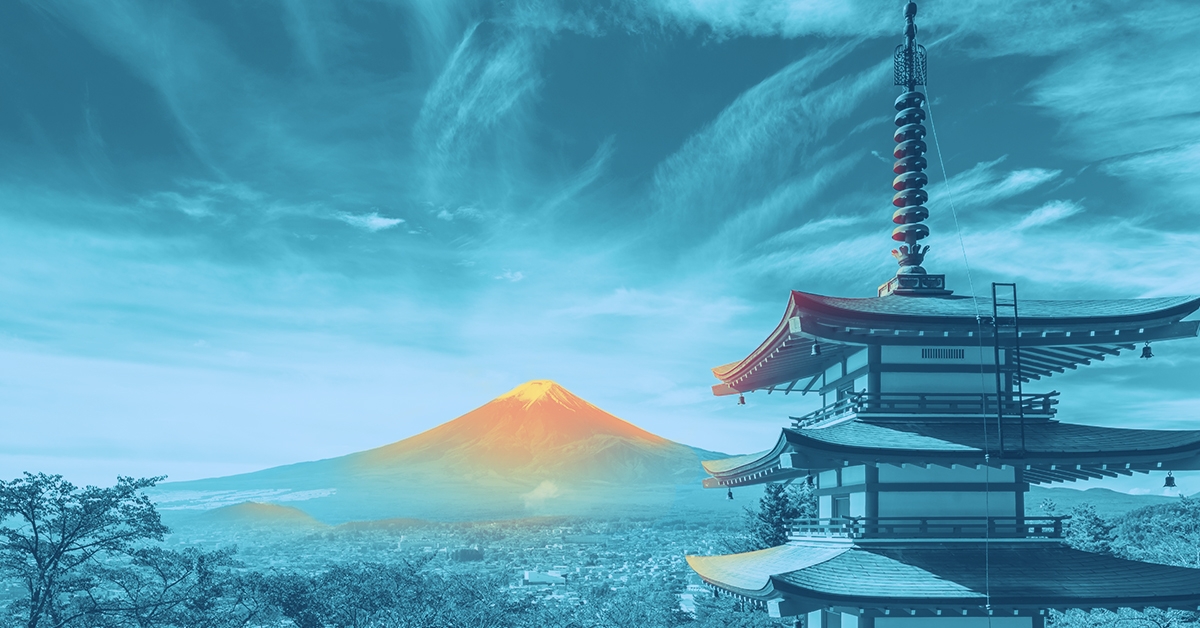 |
| Photo: singsaver |
As it seems, Japan has two perpetual rivals for the unusual title of the country’s shortest mountain, swapping the leading position between each other several times. During the first half of the 1990’s, it was Hiroyama which proudly held the title, until 1996, when the aforementioned Mount Tenpō stole Hiroyama’s fame and became officially the shortest mountain in Japan. Ironically, it was the 2011 Tōhoku earthquake and tsunami which halved Mt. Hiroyama’s height to 3 meters only, awarding it once again with the prestigious title.
5. Jingshan, China
Home to the Himalayas, the world’s highest mountain range, including Mt. Everest, the tallest mountain in the world, China is apparently also home to the world’s shortest mountain, at least by some standards.
Well-hidden in the most uninspiring location for such a title holder, a secluded field near the city of Shouguang, Jingshan Mountain rises to a staggering 60 centimeters, almost 15,000 smaller than Mt. Everest and one meter shorter than the human average height, and as such, climbable by solely one step.
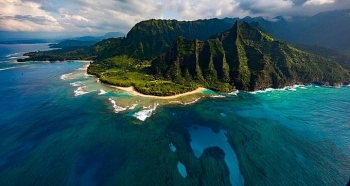 How Many Islands in USA: Top 20 Largest, The Best and Full List How Many Islands in USA: Top 20 Largest, The Best and Full List How many islands does America have? The United States claims ownership of 18,617 islands. Which islands are the most beautiful and the full list of ... |
 How Many Time Zones Are in The US? How Many Time Zones Are in The US? Scroll through to find out how many time zones are in the US and which states have more than one time zone. |
 How Many Seas Are There on Earth Today: Full List, Top Largest and Smallest Seas How Many Seas Are There on Earth Today: Full List, Top Largest and Smallest Seas This article provides a list of seas of the World Ocean, including marginal seas, areas of water, various gulfs, bights, bays, and straits. |























